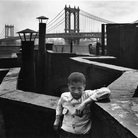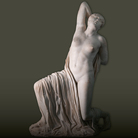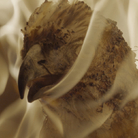MATTA. Roberto Sebastian Matta, Gordon Matta-Clark e Pablo Echaurren Matta

Roberto Sebastian Matta, J'ai, j'eu, Fondazione Querini Stampalia, Venezia
Dal 28 May 2013 al 18 August 2013
Venezia
Luogo: Fondazione Querini Stampalia
Indirizzo: Castello 5252
Orari: 10-18 (chiuso lunedì)
Curatori: Danilo Eccher
Telefono per informazioni: +390412711411
E-Mail info: info@maggioregam.com
Sito ufficiale: http://www.querinistampalia.it
In concomitanza con la 55. Biennale di Venezia, la mostra vuole indagare le idee e i pensieri che si sono tramandati – attraverso le generazioni, il tempo e la geografia – da Roberto Sebastian Matta ai suoi figli Gordon Matta-Clark e Pablo Echaurren Matta.
Tre nomi, tre storie, tre paesi e un unico comun denominatore: l'arte. In concomitanza con la 55. Biennale di Arti Visive di Venezia e per la prima volta insieme, la mostra organizzata e prodotta dalla Galleria d'Arte Maggiore – G.A.M. di Bologna, riunisce negli spazi dell'area Scarpa della Fondazione Querini Stampalia, tre grandi protagonisti dell'arte internazionale. Gordon Matta-Clark e Pablo Echaurren Matta non hanno in comune solo il padre Roberto Sebastian Matta, figura storica che con le sue tele e le sue sculture ha preso parte al Surrealismo ed influenzato gli artisti americani dell'Espressionismo Astratto, ma con due stili espressivi differenti sono entrambi due personaggi di rilievo della scena artistica contemporanea.
La mostra, curata da Danilo Eccher, prende origine dall'opera di Roberto Sebastian Matta ed attraverso le opere dei suoi protagonisti percorre mezzo secolo di storia dell'arte, vissuta in tre paesi differenti: la Francia, gli Stati Uniti e l'Italia. Lo spaccato che ne deriva non è delimitato dalla loro storia familiare, per quanto eccezionale, ma amplia i propri confini all'ambiente culturale e politico in cui questi artisti sono stati profondamente coinvolti. Figli dello stesso padre, ma di madri differenti, sia Gordon che Pablo hanno avuto un rapporto conflittuale con la figura paterna ed attraverso l'arte entrambi hanno cercato un dialogo concettuale - impossibile nella vita privata - con Matta attraverso le loro opere pur maturando entrambi, ed ognuno a suo modo, linguaggi singolari e differenti. Se l'affinità con Matta-Clark è riconducibile a un livello formale, estetico-architettonico, in Echaurren l'affinitudine è da ricercarsi nel carattere più propriamente concettuale.
Il filo conduttore della loro opera a livello critico sarà svelato da Danilo Eccher solo pochi giorni prima dell'apertura al pubblico, ma ad una prima lettura emerge già come la socialità, la continua ricerca di un rapporto non solo di partecipazione del fruitore, ma di un suo coinvolgimento diretto o indiretto, fisico o mentale, culturale o sociale, interno o esterno all'opera sia presente nell'opera dei tre. Non è un caso infatti se alcuni definiscono le figure antropomorfe di Matta sia in pittura, sia in scultura, come "morfologie sociali", come una trasfromazione di passaggio tra i paesaggi interiori e il mondo esterno. Per Gordon la socialità è un fattore ancora più evidente, essendo la sua effimera arte basata sulla performance, sui "building cuts", gli edifici tagliati, trasformazioni sculturali di architetture preesistenti dove lo spettatore è invitato ad entrare per muoversi fisicamente ed emozionalmente in quegli spazi. Nella sua opera Matta-Clark crea un rapporto diretto con il fruitore, spesso basato sulla fiducia che costui deve devolvere all'operato dell'artista che come in Matta ha fondamenti architettonici. Mentre per quanto riguarda Pablo tutta la sua vita artistica è immersa nella socialità, nella sua esistenza quotidiana. E se è vero che le sue tele riportano al mondo dei fumetti, della musica, della street art, alla cultura di massa, è attraversando la sua iconografia Pop fatta di contiminazioni di generi che dialogano ora con il Dadaismo, ora con lo stesso Surrealismo, che l'artista propone con ironia attraverso l'apparizione di una natura familiare ed allo stesso tempo inquietante una critica diretta alla società dei consumi. Proprio come sembrano suggerire le figure antropomorfe e primitive presenti nei dipinti del padre. Non a caso l'opera di Matta mira anche a una riflessione sull'impatto che la tecnologia ha sull'esistenza umana.
Tre nomi, tre storie, tre paesi e un unico comun denominatore: l'arte. In concomitanza con la 55. Biennale di Arti Visive di Venezia e per la prima volta insieme, la mostra organizzata e prodotta dalla Galleria d'Arte Maggiore – G.A.M. di Bologna, riunisce negli spazi dell'area Scarpa della Fondazione Querini Stampalia, tre grandi protagonisti dell'arte internazionale. Gordon Matta-Clark e Pablo Echaurren Matta non hanno in comune solo il padre Roberto Sebastian Matta, figura storica che con le sue tele e le sue sculture ha preso parte al Surrealismo ed influenzato gli artisti americani dell'Espressionismo Astratto, ma con due stili espressivi differenti sono entrambi due personaggi di rilievo della scena artistica contemporanea.
La mostra, curata da Danilo Eccher, prende origine dall'opera di Roberto Sebastian Matta ed attraverso le opere dei suoi protagonisti percorre mezzo secolo di storia dell'arte, vissuta in tre paesi differenti: la Francia, gli Stati Uniti e l'Italia. Lo spaccato che ne deriva non è delimitato dalla loro storia familiare, per quanto eccezionale, ma amplia i propri confini all'ambiente culturale e politico in cui questi artisti sono stati profondamente coinvolti. Figli dello stesso padre, ma di madri differenti, sia Gordon che Pablo hanno avuto un rapporto conflittuale con la figura paterna ed attraverso l'arte entrambi hanno cercato un dialogo concettuale - impossibile nella vita privata - con Matta attraverso le loro opere pur maturando entrambi, ed ognuno a suo modo, linguaggi singolari e differenti. Se l'affinità con Matta-Clark è riconducibile a un livello formale, estetico-architettonico, in Echaurren l'affinitudine è da ricercarsi nel carattere più propriamente concettuale.
Il filo conduttore della loro opera a livello critico sarà svelato da Danilo Eccher solo pochi giorni prima dell'apertura al pubblico, ma ad una prima lettura emerge già come la socialità, la continua ricerca di un rapporto non solo di partecipazione del fruitore, ma di un suo coinvolgimento diretto o indiretto, fisico o mentale, culturale o sociale, interno o esterno all'opera sia presente nell'opera dei tre. Non è un caso infatti se alcuni definiscono le figure antropomorfe di Matta sia in pittura, sia in scultura, come "morfologie sociali", come una trasfromazione di passaggio tra i paesaggi interiori e il mondo esterno. Per Gordon la socialità è un fattore ancora più evidente, essendo la sua effimera arte basata sulla performance, sui "building cuts", gli edifici tagliati, trasformazioni sculturali di architetture preesistenti dove lo spettatore è invitato ad entrare per muoversi fisicamente ed emozionalmente in quegli spazi. Nella sua opera Matta-Clark crea un rapporto diretto con il fruitore, spesso basato sulla fiducia che costui deve devolvere all'operato dell'artista che come in Matta ha fondamenti architettonici. Mentre per quanto riguarda Pablo tutta la sua vita artistica è immersa nella socialità, nella sua esistenza quotidiana. E se è vero che le sue tele riportano al mondo dei fumetti, della musica, della street art, alla cultura di massa, è attraversando la sua iconografia Pop fatta di contiminazioni di generi che dialogano ora con il Dadaismo, ora con lo stesso Surrealismo, che l'artista propone con ironia attraverso l'apparizione di una natura familiare ed allo stesso tempo inquietante una critica diretta alla società dei consumi. Proprio come sembrano suggerire le figure antropomorfe e primitive presenti nei dipinti del padre. Non a caso l'opera di Matta mira anche a una riflessione sull'impatto che la tecnologia ha sull'esistenza umana.
SCARICA IL COMUNICATO IN PDF
COMMENTI

-
 Dal 2 December 2025 al 19 February 2026
Milano | Centro Culturale di Milano
Dal 2 December 2025 al 19 February 2026
Milano | Centro Culturale di Milano
Walter Rosenblum. Il mondo e la tenerezza
-
 Dal 30 November 2025 al 12 April 2026
Gallarate | Museo MA*GA
Dal 30 November 2025 al 12 April 2026
Gallarate | Museo MA*GA
Kandinsky e l’Italia
-
 Dal 29 November 2025 al 12 April 2026
Roma | Musei Capitolini
Dal 29 November 2025 al 12 April 2026
Roma | Musei Capitolini
La Grecia a Roma
-
 Dal 22 November 2025 al 3 May 2026
Torino | Sale Chiablese dei Musei Reali
Dal 22 November 2025 al 3 May 2026
Torino | Sale Chiablese dei Musei Reali
Orazio Gentileschi. Un pittore in viaggio
-
 Dal 20 November 2025 al 25 January 2026
Firenze | Palazzo Strozzi
Dal 20 November 2025 al 25 January 2026
Firenze | Palazzo Strozzi
Andro Eradze. Bones of Tomorrow
-
 Dal 21 November 2025 al 28 March 2026
Cuneo | Complesso Monumentale di San Francesco
Dal 21 November 2025 al 28 March 2026
Cuneo | Complesso Monumentale di San Francesco
La Galleria Borghese. Da Raffaello a Bernini. Storia di una collezione


